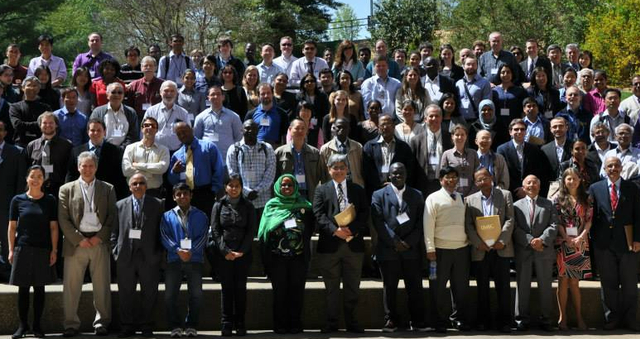


 A special feature of Probability and Statistics Day at UMBC 2014 is that the conference, including the workshop, is open to all statistics graduate students
from UMBC and local universites free of charge; however, REGISTRATION IS REQUIRED! The deadline to register is Friday,
April 11, 2014. // REGISTER NOW
A special feature of Probability and Statistics Day at UMBC 2014 is that the conference, including the workshop, is open to all statistics graduate students
from UMBC and local universites free of charge; however, REGISTRATION IS REQUIRED! The deadline to register is Friday,
April 11, 2014. // REGISTER NOW
For more information, contact any member of the organizing committee:
Bimal Sinha
Conference Chair
443.538.3012
Kofi Adragni
410.455.2406
Yvonne Huang
410.455.2422
Yaakov Malinovsky
410.455.2968
Thomas Mathew
410.455.2418
Nagaraj Neerchal
410.455.2437
DoHwan Park
410.455.2408
Junyong Park
410.455.2407
Anindya Roy
410.455.2435
Elizabeth Stanwyck
410.455.5731

Participant Information
Jin Zhou
Poster: Testing for Gene-Environment Interaction in Gene-Environment-Wide Association Studies when Environmental factor is continuous
In the genome-wide association studies (GWAS), researchers have been mainly focusing on the main effects of the genetic variants, e.g.—single nucleotide polymorphisms (SNPs) on the disease. However, sometimes significant effects of SNPs are detectable only in subpopulations defined by environmental factors. Hence, in contrast to GWAS, the goal of gene-environment-wide association studies (GEWAS) is to provide means for better understanding of the gene-environment interplay leading to increased risk of disorders. The objective of our GEWAS study is to identify novel genetic factors whose contribution to addiction is modifiable by the amount of excess body fat through a large-scale genome-wide association study of DSM-IV alcohol dependent cases and non-dependent, unrelated control subjects of European and African American descent. When environmental variable is continuous as Body Mass Index (BMI) in our study, it is important to correctly specify the functional form of its relationship with the risk of disorder. Because the model misspecification may lead to a biased test statistic for interaction, loss of power and a dramatic inflation of Type 1 error rate. Here we modify the existing two-step approach for the presence of continuous environmental variable. Specifically, our testing procedure assumes a reasonable parametric conditional distribution of environmental variable and its functional relationship with the risk of the disorder. We apply our methods to the data collected as a part of The Study of Addiction: Genetics and Environment (SAGE).